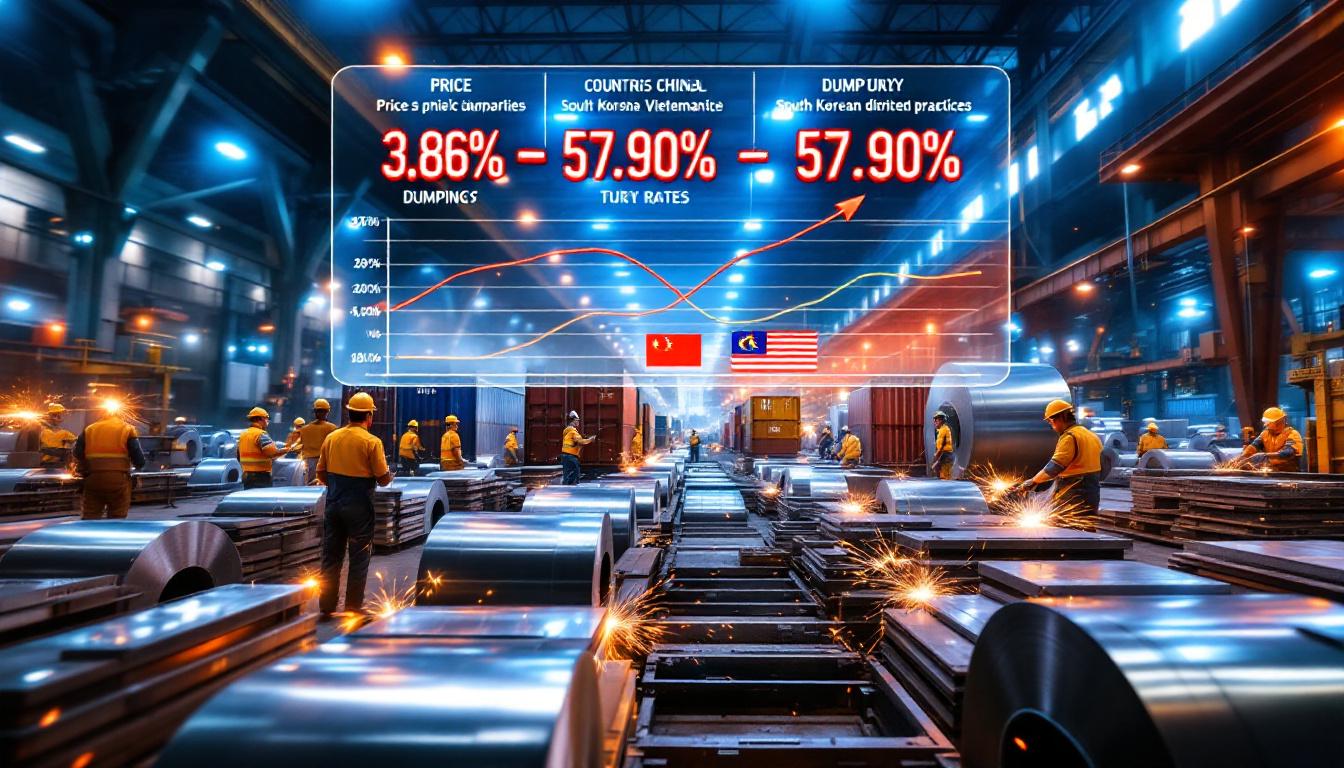What is Deep-Sea Mining and Why is it Controversial?
Deep-sea mining regulations 2025 influence the debate about exploiting oceanic mineral deposits. Valuable polymetallic nodules lying on the deep seabed are key resources in the green energy transition. Furthermore, these regulations have stirred controversy by weighing the urgent need for critical minerals against potential marine ecosystem damage.
Critics warn that disrupting ancient and delicate habitats risks irreversible loss of biodiversity. In addition, proponents argue that meeting global clean energy demands requires innovative extraction techniques.
What Regulations Govern Deep-Sea Mining in International Waters?
The International Seabed Authority (ISA) was established in 1994 as part of the UN Convention on the Law of the Sea. It now governs nearly 54% of the ocean floor.
For decades, the ISA has been formulating a comprehensive "Mining Code." Current discussions focus on aspects such as environmental safeguards, profit-sharing, and scientific oversight. Meanwhile, mining crucial role is a pivotal issue in ongoing debates.
Approximately 2,000 issues remain unresolved, further complicating the adherence to deep-sea mining regulations 2025. Consequently, the ISA’s authority is continually re-evaluated as new scientific insights emerge.
How Are Companies Preparing to Mine the Deep Sea?
Despite regulatory uncertainties, companies are rapidly preparing for commercial operations. The Metals Company (TMC) plans to submit a mining license application in June 2025. This action happens irrespective of whether the final rules are in place.
In addition, China has secured five exploration contracts and is testing advanced mining machine prototypes in the Pacific. Similarly, Silicon Valley startup Impossible Metals is developing AI-powered systems to carefully harvest nodules while reducing ecosystem impacts.
Indonesia, leveraging its status as the world’s largest nickel producer, is entering the arena as well. These strategic moves highlight the industry's drive to capitalise on emerging opportunities under deep-sea mining regulations 2025.
What Minerals Are Being Targeted in Deep-Sea Mining?
The Clarion-Clipperton Zone (CCZ) in the Pacific is the primary focus for these operations. This vast area spans 4.5 million square kilometres and may contain vast deposits of polymetallic nodules.
These nodules are critical due to their high levels of essential minerals, including cobalt, nickel, copper, and manganese. For instance, mineral governance issues often arise when discussing these resources.
Notably, an estimated 2% mining operation in the CCZ could supply enough cobalt for 280 million electric vehicles. Consequently, efficient extraction under proper deep-sea mining regulations 2025 is crucial for meeting future energy needs.
What Environmental Concerns Surround Deep-Sea Mining?
Scientific studies have recently revealed that deep-sea ecosystems are far more complex and biodiverse than previously thought. It is estimated that 30-40% of marine species in the CCZ depend on the nodules as their habitat.
Alarmingly, only 8% of these species have been described in scientific literature. Therefore, any mining operation carries substantial risks, such as destroying unique species and disturbing the sediment.
Furthermore, environmental impacts include noise and light pollution, as well as sediment plumes that could smother filter feeders. In addition, mining decarbonisation is often cited as essential to offset these risks while pursuing extraction.
How Has Leadership Changed at the ISA?
A recent leadership change at the ISA has transformed the regulatory approach. On 1 January 2025, Brazilian oceanographer Leticia Carvalho assumed the role of secretary-general.
Carvalho succeeded British lawyer Michael Lodge, whose previous policies were criticised for favouring industry over environmental safeguards. In contrast, she promises a transparent, inclusive, and scientific approach.
Her appointment has heightened expectations for a balanced enforcement of deep-sea mining regulations 2025. Consequently, many industry and environmental stakeholders now await further clarification of the rules.
What Role Do Major Powers Play in Deep-Sea Mining Politics?
Geopolitics significantly shape the deep-sea mining debate. The return of the Trump administration in Washington has emboldened certain mining advocates. For instance, TMC’s CEO Gerard Barron stated, "The big breakthrough is the new administration in DC."
In addition, China’s influence at the ISA is growing. Chinese representatives argue that environmental protection should be balanced with resource exploitation. Meanwhile, a coalition of European and Pacific Island nations insists on strict environmental criteria.
Moreover, mining investments often shape state positions on deep-sea mining regulations 2025. Consequently, international negotiations serve as both regulatory and geopolitical battlegrounds.
What Economic Considerations Impact Deep-Sea Mining?
Economic issues remain at the forefront of deep-sea mining debates. Unresolved questions include profitability, market impacts, and benefit-sharing models. One major point is royalty rates, which are set to start at 2% of gross revenue and increase to 6% after five years.
Market analysts suggest that full-scale operations could reduce cobalt and nickel prices by 20-40%. For instance, investments by companies like TMC, amounting to over $700 million, highlight the financial risks involved.
These investments underscore the importance of clear deep-sea mining regulations 2025 to provide certainty. In addition, critics argue that improved recycling and terrestrial mining might negate the need for deep seabed extraction.
What Happens if the ISA Fails to Meet the July 2025 Deadline?
The July 2025 deadline looms large over the entire regulatory framework. If the ISA cannot finalise its guidelines, it might extend negotiations, triggering legal challenges. Some experts suggest that under current interpretations of the UN Convention, provisional applications may be accepted.
Such a scenario could allow commercial extraction to proceed without complete environmental safeguards. This outcome would represent a significant shift in ocean governance. Additionally, global esg mining debates underscore the division between economic interests and environmental concerns.
These uncertain prospects highlight the pressures surrounding deep-sea mining regulations 2025. For example, TMC has stated its intention to continue with applications irrespective of the rule finalisation deadline. Consequently, environmental and economic stakeholders brace for forthcoming changes.
Emerging Perspectives and External Insights
Recent external reports further illuminate the current contested environment. For example, an article from The Guardian features a visual explainer on seabed mineral exploration, discussing the delicate balance between resource development and ecosystem protection. You can explore this perspective for additional context here.
Furthermore, analysis by the World Resources Institute provides in-depth insights into the environmental implications of seabed practices. This report explains potential long-term impacts on the marine environment. Examine these environmental assessments here.
FAQs About Deep-Sea Mining
What is the International Seabed Authority?
It is a UN-affiliated organisation established in 1994 to regulate seabed mining while ensuring environmental protection. The ISA comprises 167 member states plus the European Union.
Where will deep-sea mining first occur?
The Clarion-Clipperton Zone spans the Pacific Ocean between Hawaii and Mexico. This region, covering 4.5 million square kilometres, hosts enormous deposits of polymetallic nodules.
What minerals are being targeted?
Mining operations focus on cobalt, nickel, copper and manganese. These minerals are pivotal for electric vehicle batteries, wind turbines, and other renewable energy technologies.
How many species could be affected?
Scientists have identified over 5,000 species in the mining area, though only 8% have been thoroughly studied. Studies indicate that 30-40% of these species depend directly on seabed nodules.
Can companies begin mining without finalised regulations?
Yes, technically they can. Some companies, including TMC, plan to submit applications regardless. Doing so may force the ISA to operate under provisional guidelines as the world approaches the deep-sea mining regulations 2025 deadline.
Expert Perspectives on Deep-Sea Mining
"Tensions are building, and something's going to have to give."
– Matthew Gianni, founder of the Deep Sea Conservation Coalition
"The potential consequences for marine ecosystems demand rigorous scientific scrutiny. The abyss has waited millions of years and it can wait for us to get this right."
– Luisa Araúz, Panama's representative to the ISA
"This year will be when everything gets decided. The USA's heavy hand will be evident."
– Gerard Barron, TMC's chief executive officer
"Environmental protection, however, does not mean abandoning exploitation."
– Chen Daojiang, Chinese delegate to the ISA
Each of these expert insights further reinforces the view that responsible regulatory action under deep-sea mining regulations 2025 is essential. Consequently, as debates intensify, all stakeholders agree that the balance between economic opportunity and environmental protection must be carefully maintained.
Final Reflections
The debate surrounding deep-sea mining is as complex as the ocean floor itself. Proponents emphasise the economic and green energy benefits. In contrast, environmentalists warn of irrevocable ecological damage. Moreover, geopolitical shifts and financial stakes ensure that the discussions remain dynamic and multifaceted.
Key points include:
- The essential need for clear deep-sea mining regulations 2025.
- Significant environmental risks that could alter deep-sea ecosystems permanently.
- A global tug-of-war between economic growth and ecological protection.
Furthermore, recent leadership changes at the ISA and ongoing international negotiations add layers of complexity. Consequently, the final regulatory framework will have far-reaching implications for science, commerce, and the environment.
Through balanced and informed discourse, stakeholders can work towards ensuring sustainable resource management. Ultimately, clear and comprehensive deep-sea mining regulations 2025 are pivotal for safeguarding our marine heritage while supporting technological progress.
Looking for the Next Major Mineral Discovery?
Gain instant access to significant ASX mineral discoveries with Discovery Alert's proprietary Discovery IQ model, which transforms complex geological data into actionable investment opportunities. Explore why major discoveries can lead to exceptional market returns by visiting Discovery Alert's dedicated discoveries page and begin your 30-day free trial today.




